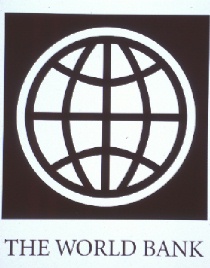 Overview
Agriculture is the backbone of the Rwandan economy – between 2006 and 2010 it accounted for 35 percent of GDP; 45 percent of export earnings and, according to the latest household survey of 2010/11, for 73 percent of employment. Constraints caused by population density, hilly terrain and erosion make it a critical determinant of rural poverty. Since 2001 Rwanda has worked closely with IDA to achieve food security and increase agricultural productivity - food security was attained in 2010 and between 2000/01 and 2010/11 poverty was reduced by about 14 percent.
Challenge
Rwanda has made remarkable progress since the civil war and genocide that started in October 1990 and ended in July 1994. It has moved from an estimated poverty rate of 77.8 percent and GDP per capita of US$ 232 in 1995 to a reported poverty rate of 44.9 percent and a GDP per capita of US$540 in 2012 .
Rwanda has averaged per capita growth of around 8 percent for the last decade but, given the rate of population increase of 2.7 percent this growth rate would need to be accelerated further to achieve sustained poverty reduction and in order to meet Rwanda’s ambitions to achieve lower middle-income status by the end of the decade.
See full Press Release.
Overview
Agriculture is the backbone of the Rwandan economy – between 2006 and 2010 it accounted for 35 percent of GDP; 45 percent of export earnings and, according to the latest household survey of 2010/11, for 73 percent of employment. Constraints caused by population density, hilly terrain and erosion make it a critical determinant of rural poverty. Since 2001 Rwanda has worked closely with IDA to achieve food security and increase agricultural productivity - food security was attained in 2010 and between 2000/01 and 2010/11 poverty was reduced by about 14 percent.
Challenge
Rwanda has made remarkable progress since the civil war and genocide that started in October 1990 and ended in July 1994. It has moved from an estimated poverty rate of 77.8 percent and GDP per capita of US$ 232 in 1995 to a reported poverty rate of 44.9 percent and a GDP per capita of US$540 in 2012 .
Rwanda has averaged per capita growth of around 8 percent for the last decade but, given the rate of population increase of 2.7 percent this growth rate would need to be accelerated further to achieve sustained poverty reduction and in order to meet Rwanda’s ambitions to achieve lower middle-income status by the end of the decade.
See full Press Release.
Saturday, July 28, 2012
Rwanda: Achieving Food Security, Reducing Poverty, Moving up the Value Chain
 Overview
Agriculture is the backbone of the Rwandan economy – between 2006 and 2010 it accounted for 35 percent of GDP; 45 percent of export earnings and, according to the latest household survey of 2010/11, for 73 percent of employment. Constraints caused by population density, hilly terrain and erosion make it a critical determinant of rural poverty. Since 2001 Rwanda has worked closely with IDA to achieve food security and increase agricultural productivity - food security was attained in 2010 and between 2000/01 and 2010/11 poverty was reduced by about 14 percent.
Challenge
Rwanda has made remarkable progress since the civil war and genocide that started in October 1990 and ended in July 1994. It has moved from an estimated poverty rate of 77.8 percent and GDP per capita of US$ 232 in 1995 to a reported poverty rate of 44.9 percent and a GDP per capita of US$540 in 2012 .
Rwanda has averaged per capita growth of around 8 percent for the last decade but, given the rate of population increase of 2.7 percent this growth rate would need to be accelerated further to achieve sustained poverty reduction and in order to meet Rwanda’s ambitions to achieve lower middle-income status by the end of the decade.
See full Press Release.
Overview
Agriculture is the backbone of the Rwandan economy – between 2006 and 2010 it accounted for 35 percent of GDP; 45 percent of export earnings and, according to the latest household survey of 2010/11, for 73 percent of employment. Constraints caused by population density, hilly terrain and erosion make it a critical determinant of rural poverty. Since 2001 Rwanda has worked closely with IDA to achieve food security and increase agricultural productivity - food security was attained in 2010 and between 2000/01 and 2010/11 poverty was reduced by about 14 percent.
Challenge
Rwanda has made remarkable progress since the civil war and genocide that started in October 1990 and ended in July 1994. It has moved from an estimated poverty rate of 77.8 percent and GDP per capita of US$ 232 in 1995 to a reported poverty rate of 44.9 percent and a GDP per capita of US$540 in 2012 .
Rwanda has averaged per capita growth of around 8 percent for the last decade but, given the rate of population increase of 2.7 percent this growth rate would need to be accelerated further to achieve sustained poverty reduction and in order to meet Rwanda’s ambitions to achieve lower middle-income status by the end of the decade.
See full Press Release.



